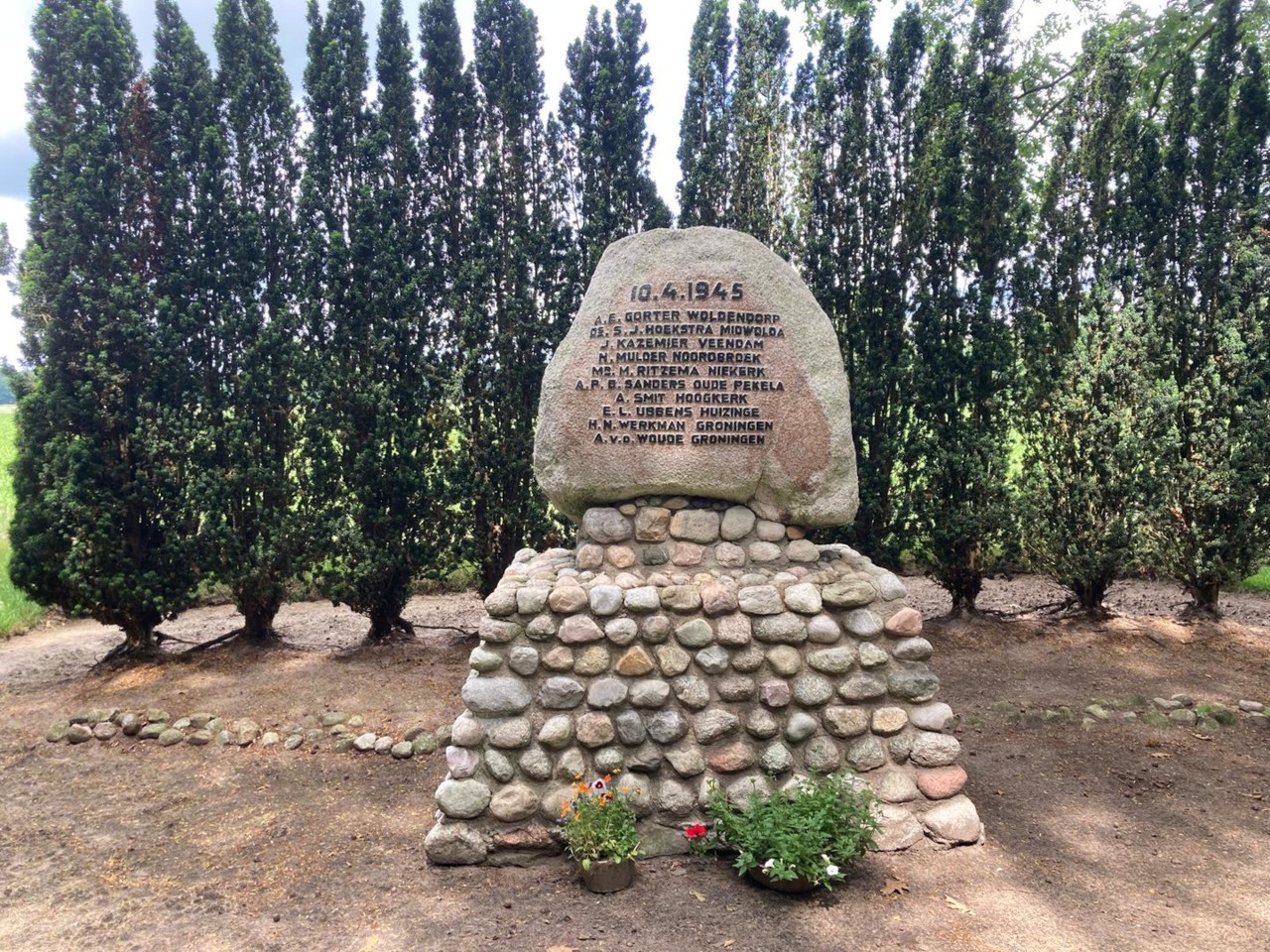n January 1945, as the region was about to be liberated by Allied troops, Einsatzkommandos (death squads) of the Sicherheitspolizei-SD (Security Service) had orders to shoot so-called 'Todeskandidaten' (death candidates). 'Todeskandidaten' were initially resistance members sentenced to death if the resistance carried out actions that harmed the occupying forces. This was an act of revenge by the occupying forces who hoped it would have a deterrent effect.
However, in January the order stipulated that these prisoners had to be shot in any case in the event of “imminent local fighting”, i.e. as soon as the Allies were in the vicinity. This was not preceded by a court ruling.
On Monday 9 April 1945, on the orders of SS-Hauptscharführer Robert Lehnhoff of the Einsatzkommando-Groningen, nine prisoners were taken from the detention centre in Groningen to be shot. They were loaded into a canvas-covered truck and accompanied by five members of the Sicherheitspolizei-SD. At 03:00, Harmannus Pieter Schuringa, commander of the Dutch Internal Armed Forces from Leek in Groningen, managed to jump out of the truck and escape. The search for Schuringa continued for another hour and a half, but without result. By then it was beginning to get light, so the truck and its prisoners returned to Groningen.
A second attempt was made on the morning of 10 April. This time, however, ten prisoners were taken away. Artist Hendrik Nicolaas Werkman (artists' circle “De Ploeg”) was also added to the group. He was suspected of having produced illegal printed matter. Two trucks drove to the place of execution, on the Nije Drintsewei between Bakkeveen and Allardsoog, and the ten prisoners were shot one by one.
Due to the heavy fog, local residents were unable to see anything. On Wednesday 11 April, several employees of the Dutch Heath Society discovered that a piece of farmland had been dug up (on the site where the monument now stands). There they found the ten bodies. The horrific discovery was reported in secret to the management of the Volkshogeschool in Allardsoog, who alerted the commander of the Internal Armed Forces in the municipality of Opsterland. There were fears of a repeat, but nothing else happened.
Canadian forces were advancing rapidly. On Sunday morning, 15 April, Liberation Day, the eight-metre-long grave was opened so that the identities of the victims could be established:
A.E. GORTER, WOLDENDORP
DS. S.J. HOEKSTRA, MIDWOLDA
J. KAZEMIER, VEENDAM
H. MULDER, NOORDBROEK
MR. M. RITZEMA, NIEKERK
A.P.B. SANDERS, OUDE PEKELA
A. SMIT, HOOGKERK
E.L. UBBENS, HUIZINGE
H.N. WERKMAN, GRONINGEN
A. V.D. WOUDE, GRONINGEN
Their funeral took place on 17 April at the cemetery in the woods near Bakkeveen. Kazemier was taken to Aduard and later the others were reburied in their own villages. Only Werkman remained in Bakkeveen.
The main perpetrator, SS-Hauptscharführer Robert Lehnhoff, was captured on Schiermonnikoog in June 1945. He was sentenced to death for his involvement in countless acts of cruelty and murder. Even a request for clemency to Queen Juliana did not change his fate. The sentence was carried out in Groningen on 14 July 1950.
